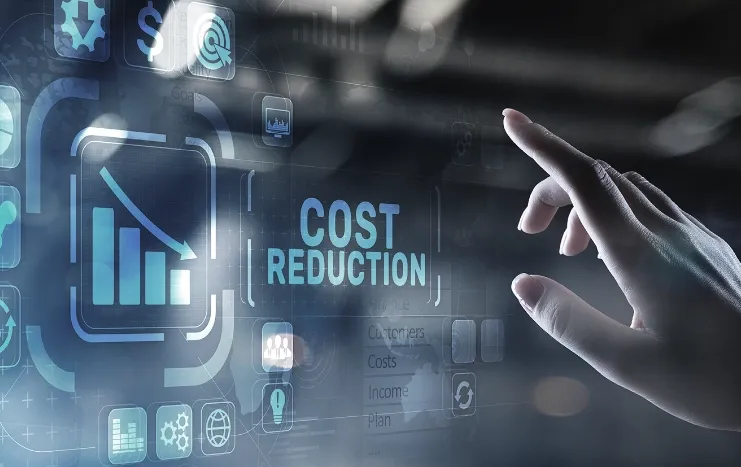Introduction
In today’s hyperconnected world, businesses depend on digital systems more than ever before. Websites, mobile apps, e-commerce platforms, and cloud-based software are no longer optional—they are the foundation of operations, customer engagement, and revenue generation. But while companies invest heavily in building these systems, many underestimate the importance of ongoing system maintenance.
Just like a car requires regular servicing to run smoothly, digital systems need consistent updates, monitoring, and optimisation to remain reliable and secure. Without proper maintenance, even the most sophisticated system can slow down, become vulnerable to cyberattacks, or fail altogether—leading to lost customers, reduced revenue, and damage to brand reputation.
In this article, we’ll explore why system maintenance is the backbone of long-term digital success, the different types of maintenance, and the steps businesses can take to ensure their digital infrastructure stays future-proof.

What System Maintenance Means in the Digital Age
System maintenance refers to the ongoing process of monitoring, updating, and optimising digital systems to ensure they function efficiently, securely, and reliably. It covers everything from websites and mobile applications to enterprise software and cloud infrastructure.
In 2025, system maintenance has evolved far beyond occasional bug fixes. It now includes:
- Security patching to protect against constantly emerging cyber threats.
- Performance optimisation to ensure fast loading times and seamless user experiences.
- Version updates to keep software compatible with new devices and operating systems.
- Data backup and recovery to minimise losses during system failures or cyberattacks.
- Scalability checks to handle increasing traffic or usage as a business grows.
The digital environment changes rapidly. New technologies emerge, security threats evolve, and user expectations rise. Businesses that fail to maintain their systems risk falling behind competitors who deliver faster, safer, and more reliable digital experiences.
Why System Maintenance Is Crucial for Long-Term Digital Success
A well-maintained system doesn’t just prevent problems; it supports sustainable business growth. Here’s why:
3.1 Maintaining System Security
Cybersecurity threats are increasing every year. Hackers constantly look for outdated software, unpatched vulnerabilities, or weak configurations to exploit. Without regular maintenance:
- Security patches may be missed, leaving systems exposed.
- Sensitive customer data can be stolen, resulting in legal consequences and loss of trust.
- Ransomware attacks can lock entire systems, halting operations.
Regular system maintenance ensures timely installation of security updates, monitoring for suspicious activity, and strengthening of firewalls and authentication systems.
Example: In 2024, several businesses faced massive data breaches simply because they failed to apply routine security updates. On the other hand, companies with proactive maintenance avoided costly damage.
3.2 Ensuring Consistent Performance
Users expect digital platforms to work seamlessly. Slow loading times, broken features, or app crashes frustrate customers and drive them to competitors. Maintenance activities like optimising databases, clearing server cache, and fixing bugs keep systems running smoothly.
For e-commerce businesses, even a one-second delay in page loading can reduce conversions by up to 7 percent. Regular performance maintenance directly impacts sales, customer satisfaction, and long-term brand loyalty.
3.3 Reducing Downtime and Operational Risks
Unplanned downtime can cripple a business. Whether it’s a server crash, software malfunction, or database error, every minute of downtime can cost thousands in lost revenue—especially for online retailers or SaaS providers.
Preventive system maintenance, including server monitoring, hardware checks, and routine backups, reduces the risk of unexpected failures. Businesses that invest in proactive maintenance experience fewer outages and recover faster when issues occur.
3.4 Supporting Scalability and Business Growth
As businesses grow, so does the demand on their digital infrastructure. A system that works for 1,000 users may fail when traffic increases to 100,000. Maintenance ensures that systems remain scalable by:
- Upgrading servers or cloud resources.
- Optimising code to handle higher traffic volumes.
- Ensuring software compatibility with new integrations.
Without this, businesses risk losing opportunities during peak periods, such as major sales campaigns or product launches.
3.5 Building Customer Trust and Brand Reputation
In the digital world, reliability builds trust. Customers are unlikely to stay loyal to a brand if its website is frequently down or if data breaches occur. Regular maintenance not only improves security and performance but also shows customers that you prioritise their safety and experience.
A well-maintained system enhances credibility and sets your brand apart from competitors who neglect long-term upkeep.
Types of System Maintenance Every Business Needs
Not all maintenance is the same. Understanding the four main types of system maintenance helps businesses allocate resources effectively.
4.1 Preventive Maintenance
What it is: Routine actions to prevent problems before they occur.
Examples:
- Applying security patches.
- Monitoring server health.
- Running regular malware scans.
Preventive maintenance is proactive and cost-effective, reducing the likelihood of serious issues later.
4.2 Corrective Maintenance
What it is: Fixing errors and malfunctions after they occur.
Examples:
- Repairing bugs.
- Replacing faulty hardware components.
Corrective maintenance is reactive but necessary for issues that preventive measures can’t avoid.
4.3 Adaptive Maintenance
What it is: Modifying systems to stay compatible with changing environments.
Examples:
- Updating software for new operating systems.
- Adjusting to new regulations or compliance standards.
Adaptive maintenance ensures long-term system usability as technology and regulations evolve.
4.4 Perfective Maintenance
What it is: Improving system performance or adding new features.
Examples:
- Optimising database queries for faster performance.
- Enhancing user interfaces for better experience.
Perfective maintenance helps businesses stay competitive by constantly improving their systems.

First Steps to Building a Strong Maintenance Strategy
Many businesses treat maintenance as an afterthought, only reacting when things go wrong. But successful organisations view maintenance as a strategic investment. The first steps include:
- Auditing Existing Systems – Identify weaknesses, outdated software, and performance bottlenecks.
- Setting Clear Maintenance Schedules – Plan weekly, monthly, and quarterly maintenance tasks.
- Using Monitoring Tools – Invest in real-time performance and security monitoring software.
- Working with Experts – Partner with experienced agencies or IT teams who specialise in ongoing system maintenance.
Building a strong maintenance strategy early prevents costly breakdowns and ensures long-term digital success.
The Business Costs of Neglecting System Maintenance
Ignoring system maintenance can have serious consequences, ranging from financial losses to permanent reputational damage.
1. Financial Losses
Downtime, slow systems, and security breaches directly impact revenue. For e-commerce businesses, even one hour of website downtime during peak shopping seasons can cost tens of thousands in lost sales.
2. Security Breaches
Outdated software and unpatched vulnerabilities are prime targets for cybercriminals. A single data breach can result in lawsuits, fines for violating data protection laws, and loss of customer trust.
3. Decreased Productivity
Systems that are slow or frequently malfunction disrupt workflows. Employees spend more time troubleshooting rather than focusing on core business tasks.
4. Loss of Competitive Edge
Customers expect seamless digital experiences. If your website or app is consistently underperforming, they will quickly move to competitors who offer faster, more reliable platforms.
5. Long-Term Damage to Brand Reputation
Recovering from a major system failure or data breach is difficult. Customers may hesitate to return, and negative reviews can discourage new prospects.
Case Studies: Companies Thriving Through Proactive Maintenance
1. Amazon’s Predictive Maintenance Model
Amazon invests heavily in predictive system maintenance. Their automated monitoring tools detect potential issues before they affect users. As a result, Amazon maintains 99.99 percent uptime, ensuring consistent customer satisfaction and billions in uninterrupted revenue.
2. Netflix’s Continuous Optimisation
Netflix’s success depends on delivering seamless streaming worldwide. The company uses real-time monitoring and automated scaling to adjust server resources based on demand. This proactive approach keeps buffering times low and retains millions of subscribers.
3. Local Retailers Using Cloud Maintenance Services
Many small and medium businesses now outsource their system maintenance to cloud service providers. For example, a Malaysian e-commerce retailer partnered with a digital agency for preventive maintenance, resulting in 30 percent faster page load speeds and increased conversion rates.
These examples show that whether you are a global enterprise or a small business, proactive system maintenance leads to measurable business growth.
Step-by-Step Guide to Creating an Effective Maintenance Plan
Building a maintenance strategy may seem overwhelming, but breaking it down into manageable steps makes it easier.
1. Conduct a Full System Audit
List all critical digital assets—websites, mobile apps, software systems, and servers. Identify outdated components, security vulnerabilities, and performance issues.
2. Prioritise Based on Business Impact
Not all systems require the same level of attention. Prioritise high-traffic websites, customer-facing applications, and data-sensitive systems.
3. Create a Maintenance Schedule
Establish daily, weekly, monthly, and quarterly tasks.
- Daily: Security monitoring, log checks, and server health checks.
- Weekly: Backups, malware scans, and software updates.
- Monthly: Performance optimisation and bug fixes.
- Quarterly: Full security audits and scalability reviews.
4. Automate Where Possible
Use monitoring tools and automated scripts to handle repetitive tasks such as patch installations and backups. This reduces human error and saves time.
5. Train or Outsource
If your in-house team lacks expertise, outsource maintenance to a reliable digital partner. Trinergy Digital, for example, provides end-to-end system maintenance and optimisation services to ensure businesses stay secure and competitive.
6. Document Everything
Keep detailed records of updates, incidents, and fixes. This helps track performance improvements and simplifies compliance audits.
7. Measure and Refine
Regularly review key performance indicators such as system uptime, page load speed, and user satisfaction. Use these insights to refine your maintenance plan.

Future Trends in System Maintenance
The way businesses maintain systems is evolving. Here are some trends shaping the future:
1. AI-Powered Predictive Maintenance
Artificial intelligence will play a bigger role in analysing system data to predict failures before they happen, reducing downtime and costs.
2. Automated Self-Healing Systems
Next-generation systems will automatically detect and repair issues without human intervention, further reducing disruptions.
3. Cloud-Native Maintenance
As businesses move to cloud platforms, cloud-native maintenance tools will make updates faster and more secure.
4. Zero-Trust Security Models
Cybersecurity maintenance will increasingly rely on zero-trust frameworks, continuously verifying every access request to reduce security risks.
5. Sustainability in IT Maintenance
Energy-efficient servers and eco-friendly maintenance practices will become more common as companies focus on reducing carbon footprints.
Businesses that adopt these trends early will enjoy higher reliability, stronger security, and better cost efficiency.
Summary
In 2025, system maintenance is no longer just an IT task—it is a business-critical strategy. Regular updates, security patches, performance optimisation, and scalability checks are essential for delivering seamless customer experiences, protecting data, and ensuring long-term growth.
Companies that invest in proactive system maintenance gain competitive advantage, improved efficiency, and stronger customer trust, while those that neglect it risk financial losses, reputational damage, and falling behind competitors.
If you want to secure your business’s digital future, Trinergy Digital can help. Contact us today to learn how our system maintenance services keep businesses running smoothly and securely.
FAQs
1. Why is system maintenance important for business growth?
Because it ensures reliable performance, stronger security, and better customer experience, all of which drive long-term revenue.
2. How often should system maintenance be performed?
Basic tasks like security monitoring should be daily, while full audits and optimisation should be done quarterly.
3. Is system maintenance expensive?
Proactive maintenance is far cheaper than recovering from system failures or cyberattacks.
4. Can small businesses benefit from maintenance services?
Yes. Even small businesses need preventive maintenance to stay secure, fast, and competitive.
5. Should I handle system maintenance in-house or outsource it?
If you lack technical expertise, outsourcing to a professional digital agency ensures consistent and reliable maintenance.
Suggested Internal Links
- Professional Web Development Services
- User Experience Design Services
- Marketing Success Stories from Trinergy Digital
Suggested External Sources

